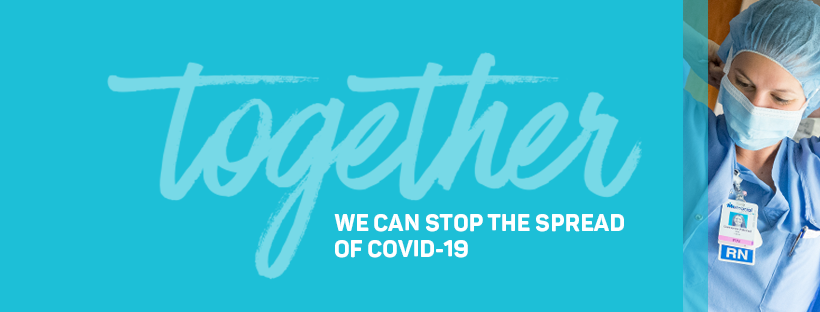This post is part of TBH Creative’s series on digital marketing, crisis communications, and COVID-19.
Social media plays an essential role in how we interact and communicate with one another every day. It takes on even more importance during times of disarray and uncertainty, which is why it’s essential to include social media planning as part of your crisis marketing strategy.
Keep reading to learn more about best practices for integrating social media into your crisis communications plans.
✔️ Do: Share service updates promptly
Drafting, approving, and scheduling a tweet of 280 characters is simple when compared with preparing and executing a complete crisis marketing strategy (especially if it includes email messaging, blog posts, new website content, revised brand statements, and more), but your social media communications aren’t any less important.
Use social media’s ability to reach many people quickly to your advantage. Here are some tips for maximizing the effectiveness of your social media posts during a crisis:
- Focus on being helpful and spreading useful information
- Keep your voice consistent
- Think through what you are going to share—and when—to avoid posting conflicting messages
- Be flexible (now might be a good time to pause other marketing campaigns)
- Audit posts scheduled in advance for relevance and appropriateness
- Monitor channels for feedback and respond to queries from your customers
Pro-tip: During a crisis, information can get passed along in the hustle and bustle that isn’t always accurate. One way to avoid passing along misinformation is to stop and assess if the content is relevant to your audience and if the source can be trusted.
For example, if you handle social media marketing for a dog walking service during the coronavirus outbreak, you probably shouldn’t be using to use your social media accounts pass along the CDC’s latest information about the spread of the disease but it might make sense to include information from a trusted vet about ways to entertain your dog when he’s inside more often than usual.
It’s easier to stay on brand—and avoid sharing wrong information—when you use your social media to cover information that is related to the services you provide (and for which you’re considered an expert or thought leader).

Think about what can you do for your customers right now
You don’t have to invent new services or products to be helpful to your customers during a crisis. Sometimes, what you already offer might be just what they need.
Take Classic Cleaners, for example. During the COVID-19 pandemic, they have been using its social media accounts to remind customers and leads about their existing free contactless home pickup and delivery service and to provide info about how professional cleaning services ensure your laundry and household items are properly cleaned and sanitized.
✔️ Do: Keep posting
If you normally post regularly on social media, your silence will not go unnoticed. Keep posting to show your company is aware of the situation and making plans to address your customers’ during this time of change and uncertainty. Coordinate your messaging with people in the know at your company and make appropriate plans to keep the approval of social media content on the radar as a communication priority.
While not all posts can be planned out in advance, get the information you need to share information about the basics and answer general queries from customers. The worst time to post about a situation or respond to your customers is after the situation is already over. Even subtle messaging is better than saying nothing at all.
Build community and show your support
While Logansport Memorial Hospital has had many posts regarding the COVID-19 pandemic, they also adjusted the cover art on their social media accounts to knowledge the current situation.

✔️ Do: Communicate need-to-know information
Depending on the crisis at hand, your business may need to change how it operates and that means changing what you post about on social media. This might mean adjusting the copy or graphics used in your upcoming scheduled social posts or replacing them outright with new content that addresses the situation at hand. Take a minute and ask yourself: what is changing at my business as a result of the crisis? What do my customers need to know? What content will help them the most right now?
Here are some types of posts that you might want to share during a crisis situation:
- How has customer service changed? Is there a new protocol for answering customer questions? Should customers use a new web form or call a new phone number? Has turnaround time for a response changed?
- Have your hours changed?
- Have any of your locations closed?
✔️ Do: Create a crisis communications social media team
In times of uncertainty, things can change quickly. Putting the responsibility for managing all of your company’s social media on only one team member’s plate is a recipe for potential disaster. The saying “two heads are better than one” definitely stands true when things are up in the air.
Having one point person for your social media might be adequate when it’s business as usual, but—during a crisis—it doesn’t hurt to make sure they have support for tackling things like extra social listening, graphics creation, analytics monitoring, and more.
If you’re struggling to keep up with your social media crisis communications, you don’t have to go it alone. Build a temporary internal team or look to hiring outside experts for assistance.
Consider working with digital marketing pros with experience handling social media crisis communications. Partner with an agency with a proven track record for getting results and helping companies survive—and thrive—during a crisis.

